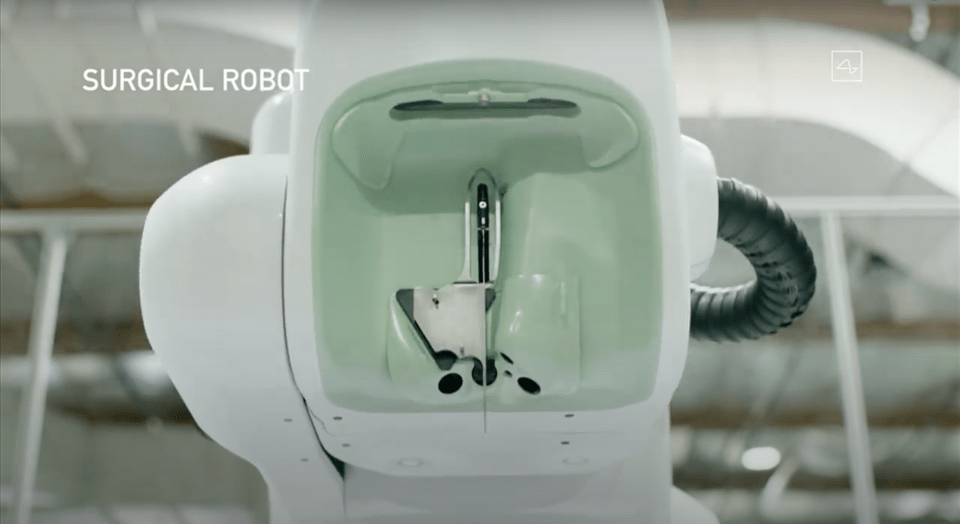
Elon Musk recently demoed the latest iteration of Neuralink, a revolutionary brain-machine interface. The device will help people transcend the limits of humanity by connecting them to a computer directly. We will also be able to better communicate with the inevitable self-aware AI once it comes online.
Musk said back in 2019 that ‘It’s important that Neuralink solves this problem sooner rather than later, because the point at which we have digital superintelligence, that’s when we pass the singularity and things become just very uncertain.’
At Neuralink’s headquarters on Friday, Elon revealed a working ‘V2’ prototype robot that will automate the installation surgery of the Neuralink device. The machine sews as many as 1,024 mind-numbingly thin 5 micron diameter electrodes into a human brain. So far only the brain’s cortical surface available for manipulation, but Musk is confident to be able to tap into grey matter to monitor deeper regions of the brain. The tiny electrodes will connect to Neuralink’s chip dubbed ‘Link 0.9’ which is a 23mm x 8mm sealed device that plugs into a tiny hole in the user’s skull and. The device collects the signals that are detected by the electrodes. It will measure body temperature, pressure and movement, and is able to provide early detection of heart attacks and strokes.
The Link fits flush in the skull with no raised surface and transmits data wirelessly up to 10 meters at speeds in the megabits per second. The device is able to be charged wirelessly, so, there are no worries of having to plug yourself into a USB port to charge. a single charge provides a full day of battery life so you can charge it as you sleep. It takes under an hour for the entire installation process.
Elon brought three pigs on stage. One pig had not had the device implanted and appeared totally normal. Another pig had the implant but had it removed several months prior to demonstrate the fact that the Link device is not a permanent attachment and safe to remove. The last pig had the device implanted and still has it installed. The link in the third pig monitors the signals generated from her snout. The Link device is able to record the signals that the pig can smell.
No human trials have been completed as of yet, but Elon did hint that he could have one and that nobody would be able to tell. Neuralink has, however, been able to implant 1,500 electrodes into mice. We also know that the chip has been tested on primates because Elon told Bloomberg back in July, ‘a monkey has been able to control a computer with its brain.’ Expect human trials to begin this year.
There is no reason for this system to not work in humans the same way as it did in primates. Neuralink will begin by using the technology to help amputees more easily control devices and will help people regain lost senses of sight and sound. It will even be able to treat degenerative diseases that have be previously impossible to remedy. Eventually, Neuralink will be able to upgrade human consciousness, by giving us the ability to communicate with computers as fast as one can think. There is even the possibility that with Neuralink, we will one day be able to save and replay memories. Things could go as far as even downloading our consciousnesses to a computer. We don’t know about pricing just yet, but whatever that may be, you can expect that to fall rapidly as demand rises.
Although brain-to-machine communication is nothing knew, this is the first time its been done anywhere near this level. Previous systems have helped paraplegics walk and have helped amputees move prosthetic limbs, but those were very low-resolution, one of attempts. Neural provides much more bandwidth and will be deployed en mass.
Elon’s system will gain competition as several universities and research organizations are developing systems of their own, but as always, you can expect Elon to have the better solution. The US FDA (Food and Drug Administration) granted permission for ‘breakthrough device’ testing in July of 2020.

